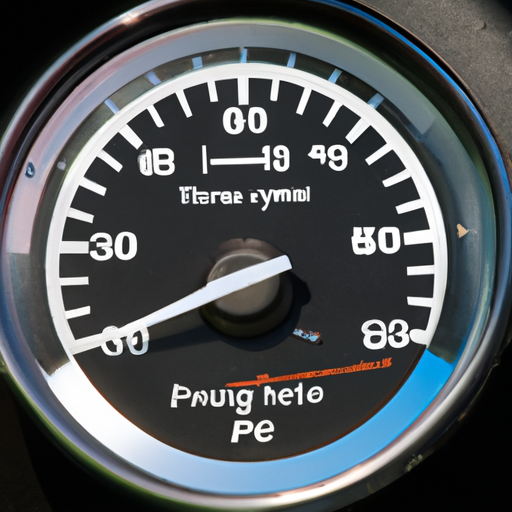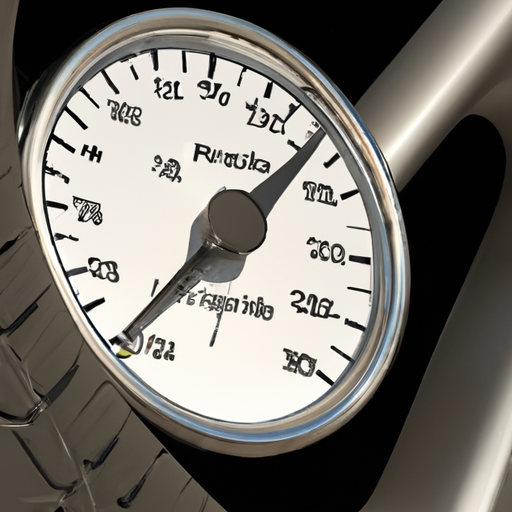In this article, you will learn how to properly inflate the tires of your Ford Edge to ensure they are at the correct pressure. Maintaining the recommended tire pressure is important for both your safety and the performance of your vehicle. By following these simple steps, you can easily and effectively inflate your Ford Edge’s tires to the correct pressure.
First, you will need to gather the necessary tools and equipment. You will need a tire pressure gauge, an air compressor or tire inflator, and a source of compressed air. Next, locate the recommended tire pressure for your Ford Edge. This information can usually be found on a label inside the driver’s side door frame or in the owner’s manual. Once you have the recommended pressure, remove the valve cap from each tire and attach the tire pressure gauge to the valve stem. With the gauge in place, slowly add air to the tire until it reaches the desired pressure. Repeat this process for each tire, ensuring they are all at the correct pressure. Remember to always check your tire pressure regularly and adjust as necessary to ensure a safe and smooth driving experience.
Preparing to inflate the tires
Before you begin inflating the tires of your Ford Edge, there are a few important steps to take in order to ensure a safe and successful inflation process. First, you need to check the recommended tire pressure for your particular Ford Edge model. Second, inspect the tires for any damage or excessive wear that may require further attention.
Checking the recommended tire pressure
To determine the correct tire pressure for your Ford Edge tires, refer to the owner’s manual or the label on the inside of the driver’s side door jamb. This information will provide you with the recommended tire pressure for both the front and rear tires of your vehicle. It is crucial to follow these numbers to ensure optimal performance, safety, and fuel efficiency.
Inspecting the tires for any damage or wear
Once you have identified the recommended tire pressure, take a moment to visually inspect each tire for any visible damage or signs of wear. Look for cracks, bulges, or punctures on the tire surface. Additionally, check the tread depth using a tread depth gauge or the “penny test.” If any of the tires show signs of damage or have insufficient tread depth, consult a professional for further inspection and possible replacement.
Gathering the necessary tools and equipment
Now that you have checked the recommended tire pressure and inspected the tires for any damage, it’s time to gather the tools and equipment needed for the inflation process.
Locating a tire pressure gauge
To accurately measure the tire pressure, you will need a tire pressure gauge. This tool allows you to check the current pressure and compare it to the recommended pressure. You can find tire pressure gauges at automotive supply stores, gas stations, and online retailers.
Finding an air compressor or tire inflator
To inflate the tires, you will need a source of air. An air compressor or a portable tire inflator are two common options. An air compressor is more suitable for home use, while a portable tire inflator is convenient for on-the-go inflation. Ensure that the air compressor or tire inflator you choose is compatible with your Ford Edge’s tire valve stems.


Inflating the tires
Once you have gathered the necessary tools and equipment, it’s time to start inflating the tires.
Locating the tire valve stem
The tire valve stems are small rubber or metal stems protruding from the wheel rims. They serve as the access point for inflating and deflating the tires. Locate the valve stem on the first tire you plan to inflate.
Removing the valve cap
Before attaching the tire pressure gauge or the air compressor, you need to remove the valve cap. The valve cap protects the valve stem from dirt and debris. Unscrew the valve cap and set it aside in a safe place.
Attaching the tire pressure gauge
Now that the valve cap is removed, it’s time to attach the tire pressure gauge. Press the gauge firmly onto the valve stem until you hear a hissing sound. This indicates a proper connection between the gauge and the valve stem.
Reading the current tire pressure
Once the tire pressure gauge is attached, a reading will appear on the gauge’s display. Take note of this reading as it represents the current tire pressure. Compare it to the recommended pressure for your Ford Edge model.
Connecting the air compressor or tire inflator
If the current tire pressure is lower than the recommended pressure, it’s time to connect the air compressor or tire inflator. Locate the appropriate attachment on the compressor or inflator and securely connect it to the valve stem. Ensure a tight connection to prevent any air leaks during the inflation process.
Inflating the tire to the recommended pressure
With the air compressor or tire inflator connected, begin adding air to the tire. Keep an eye on the pressure gauge as you inflate. Adjust the airflow if necessary, aiming for the recommended tire pressure. Be sure to follow the instructions provided with your air compressor or tire inflator for the most accurate and safe inflation process.
Checking the pressure periodically while inflating
As you continue inflating the tire, periodically check the pressure using the tire pressure gauge. This allows you to monitor the progress and prevent over-inflation. Inflate in short bursts to ensure a gradual and controlled increase in pressure.
Monitoring the pressure gauge
While inflating, keep a close eye on the pressure gauge. It will provide real-time feedback on the tire pressure. This ensures that you do not overinflate the tire and potentially cause damage.
Stopping when the desired pressure is reached
Once the tire reaches the recommended pressure, it’s time to stop inflating. Disconnect the air compressor or tire inflator from the valve stem and wait for a moment to allow the pressure to stabilize. Then, check the pressure once more using the tire pressure gauge to confirm that it matches the recommended pressure.
Repeating the process for all tires
After successfully inflating the first tire to the correct pressure, it’s important to repeat the process for all remaining tires on your Ford Edge.
Moving on to the next tire
Move to the next tire and repeat the steps outlined above: locate the valve stem, remove the valve cap, attach the tire pressure gauge, check the current tire pressure, connect the air compressor or tire inflator, inflate to the recommended pressure, periodically check the pressure while inflating, monitor the pressure gauge, and stop when the desired pressure is reached.
Repeating the steps for each tire on the Ford Edge
Continue this process until all four tires on your Ford Edge are inflated to the correct pressure. Take your time and double-check each tire to ensure they are all properly inflated.


Replacing the valve caps
Once all the tires are inflated to the correct pressure, it’s time to replace the valve caps.
Cleaning any dirt or debris on the valve stem
Before replacing the valve cap, take a moment to clean any dirt or debris on the valve stem. Use a clean cloth or towel to wipe away any contaminants that may prevent a secure and tight fit for the valve cap.
Screwing the valve cap back onto the valve stem
With the valve stem clean, screw the valve cap back onto the valve stem in a clockwise motion. Ensure that it is tightened securely to prevent any air leakage.
Checking the tire pressure
After the inflation process is complete, it’s important to double-check the tire pressure to ensure that all tires are properly inflated.
Using the tire pressure gauge to check the inflated pressure
Grab your tire pressure gauge and repeat the process of attaching it to each tire valve stem. Take note of the current tire pressure for each tire and compare it to the recommended tire pressure for your Ford Edge.
Ensuring that the pressure matches the recommended pressure
Confirm that the pressure in each tire matches the recommended pressure. If any tire is over or underinflated, follow the necessary steps to adjust the pressure accordingly.


Adjusting the tire pressure if necessary
If any of the tires have not reached the recommended pressure after the initial inflation, it’s important to adjust the pressure as needed.
Repeating the inflation process if the pressure is too low
If a tire’s pressure is too low, reconnect the air compressor or tire inflator and continue adding air until the recommended pressure is reached. Remember to periodically check the pressure using the tire pressure gauge to prevent over-inflation.
Releasing some air if the pressure is too high
If a tire’s pressure is too high, carefully use a small tool, such as a tire pressure gauge or a pen, to release some air from the valve stem. Recheck the pressure frequently to avoid deflating the tire too much.
Confirming the correct tire pressure
Once the tire pressure is adjusted, it’s important to double-check and confirm that all tires now have the correct pressure.
Double-checking the pressure after adjusting
Using the tire pressure gauge, check the pressure in each tire one final time after any necessary adjustments have been made. Ensure that the pressure matches the recommended pressure for your Ford Edge.
Ensuring all tires are inflated properly
Confirm that all four tires are inflated properly and maintain the recommended pressure. This is essential for safe and efficient driving.


Maintaining the correct tire pressure
In order to keep your Ford Edge tires in optimal condition, it’s important to regularly check and maintain the correct tire pressure.
Regularly checking the pressure
Make it a habit to check the tire pressure every month and before long trips. This will help identify any potential issues and ensure your Ford Edge is always operating at its best.
Inflating or adjusting as needed
If you notice a decrease in tire pressure, inflate the tire to the recommended level as soon as possible. Likewise, if the pressure becomes too high, release some air until it reaches the recommended pressure. Promptly addressing any pressure deviations will help prolong the life of your tires and ensure safe driving.
Following the manufacturer’s recommendations
It’s important to follow the manufacturer’s recommendations regarding tire maintenance and pressure. These guidelines are specifically designed for your Ford Edge, taking into consideration factors such as weight distribution, size, and overall performance.
Conclusion
Inflating the tires to the correct pressure is crucial for safe and efficient driving. By following the proper steps and regularly checking the tire pressure, you can ensure optimal performance and longevity of your Ford Edge’s tires. Remember to check the recommended tire pressure, inspect your tires for any damage or wear, gather the necessary tools and equipment, and carefully follow the inflation process outlined above. With these steps, you can confidently and successfully inflate your Ford Edge’s tires to the correct pressure, keeping you and your vehicle safe on the road.


